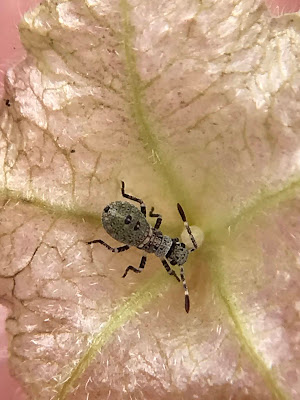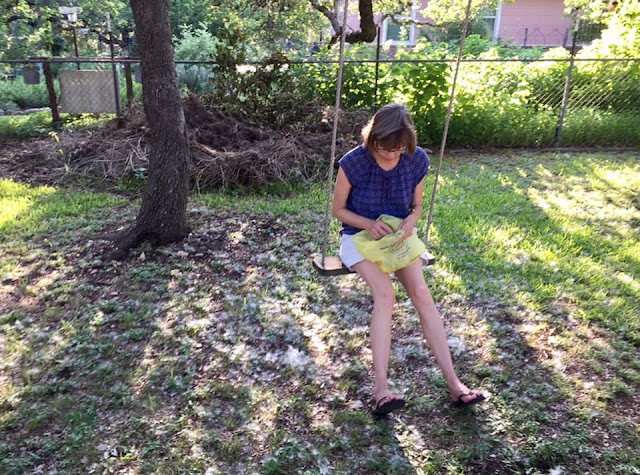 |
| Mystery on Wes' plant |
"Do you have any idea of what's growing on this plant?" my neighbor Wesley M. messaged the other day.
I peered at the photo he sent. "I think they're mealybugs," I replied. "We've got them on a lot of plants, too."
NOT, Sheryl.
Of course, I had to go out and double check. I didn't want to spread inaccurate information. In our yard, I'd seen a LOT of white stuff on different plants the past few weeks. Just mealybugs, I thought to myself. But just because I assumed they were mealybugs didn't mean that they were.
And they WEREN'T.
When I touched one, it HOPPED off! Say WHAT?!
Good ol' iNaturalist helped me out when I posted an observation. "Possibly citrus flatid planthopper or some sort of planthopper / treehopper / leafhopper nymph in their early instars," kip_lary wrote.
That's IT!
Citrus flatid planthoppers (Metcalfa pruinosa) gets their common name from the fact that they're often found on citrus plants. Metcalfa pruinosa is the only species of its Metcalfa genus that occurs in Texas. In August 2018, I found an adult in our yard. This year, we have more white fluff on plants than I remember in the past. Are they hurting the plants? No, according to what I read.
And in my feeble defense, the white, waxy material made by these bug nymphs are often mistaken for mealybugs. Cottony-cushion scale, too.
 |
| Adult 2018 |
In our yard, I found them on Engelmann daisies, 'Eyelash' salvia, Texas nightshade and Mexican hats, to name only a few examples.
"Infestations originate from an adult that lays its eggs inside the stems of host plants the year before," Mike Merchant states in "Insects in the City. "Nymphs hatch in March-April and take close to two months to develop. There is reportedly only one generation per year, and adults are most commonly seen now, in June.
 |
| Those filaments |
While I was photographing planthoppers, this little guy would move away from his/her bare perch on a Mexican hat stem, then slide back onto it. I couldn't get a good photo of the behavior so I shot this short video. Funny! P.S. THANK YOU, Wes, for asking the question!
































